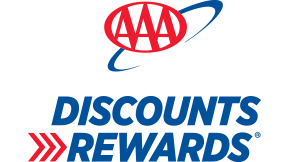Medicare Glossary
Annual Enrollment Period (AEP) +
Annual Notice of Change (ANOC) +
Centers for Medicare & Medicaid Services (CMS) +
Coinsurance +
Copayment (copay) +
Cost-sharing +
Coverage gap/catastrophic coverage (for Part D) +
Most Medicare Part D drug plans have a coverage gap—also known as the "donut hole"—that temporarily limits what the drug plan will cover for drugs. Not everyone enters the coverage gap. It begins after you and your drug plan have spent a certain amount for covered drugs. This amount may change each year. For instance, in 2022, once you and your plan have spent $4,430 on covered drugs, you'll enter the coverage gap.
If you reach the coverage gap, you'll pay no more than 25% of the cost for your plan's covered brand name prescription drugs, regardless of whether you purchase them at a pharmacy or order them through the mail. Some plans may offer you even lower costs in the coverage gap. Although you’ll only pay 25% of the price—or less—for a brand name drug, 95% of the full price of the drug will count as your out-of-pocket costs to help you get out of the coverage gap faster. If you get Extra Help paying Part D costs, you won't enter the coverage gap.
Once you've spent the out-of-pocket limit ($7,050 in 2022), you're out of the coverage gap and will automatically get "catastrophic coverage." This ensures you only pay a small coinsurance percentage or copayment for covered drugs for the rest of the calendar year.
Creditable coverage (for Part D) +
Deductible +
Dual-eligible +
Extra Help +
Formulary +
General Enrollment Period (GEP) +
Generic drugs +
Health Maintenance Organization (HMO) plan +
Initial Enrollment Period (IEP) +
Medicare Medical Savings Account (MSA) Plan +
Network +
Out-of-pocket costs +
Out-of-pocket limit +
Point of Service (POS) plan +
Preferred Provider Organization (PPO) +
Prescription drug plan (PDP) +
Preventive services +
Private Fee-For-Service plan (PFFS) +
Provider +
Service area +
Special Enrollment Period +
Special Needs Plan (SNP) +
Our AAA Licensed Insurance Agents are here to help you
Our AAA Licensed Insurance Agents will talk with you to understand your personal situation and help you sort through your options. We’ll give you unbiased advice about the coverage options that are best for you. If you have questions, please call us at (877) 477-7120.









